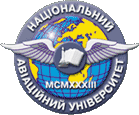Моніторинг глибини механічної обробки композита з використанням акустичної емісії
DOI:
https://doi.org/10.18372/1990-5548.54.12334Ключові слова:
Акустична емісія, композиційний матеріал, сигнал, енергія, механічна обробка, статистичні характеристикиАнотація
Розглянуто результати експериментальних досліджень енергетичних параметрів акустичної емісії при зростанні глибини механічної обробки композиційного матеріалу. Визначені закономірності зростання статистичних енергетичних параметрів акустичної емісії. Визначена чутливість енергетичних параметрів акустичної емісії до зростання глибини механічної обробки композиційного матеріалу. Показано, що процентний приріст дисперсії середнього рівня енергії сигналів акустичної емісії випереджає процентний приріст середнього рівня енергії и його стандартного відхилення. Показано, що експериментальні і теоретичні результати досліджень енергетичних параметрів сигналів акустичної емісії мають добре узгодження.
Посилання
N. Mokhtar, I. Y. Ismail, M. Asmelash, H. Zohari, and A. Azhari, “Analysis of acoustic emission on sur-face roughness during end milling,” Journal of Engi-neering and Applied Sciences, vol. 12, no. 4, pp. 1324–1328, 2017.
O. A. Olufayo and K. Abou-El-Hossein, “Acoustic Emission Monitoring in Ultra-High Precision Ma-chining of Rapidly Solidified Aluminum,” Proceed-ings International Conference on Competitive Manufacturing (Coma ’13, 30 January – 1 February 2013 Stellenbosch, South Africa), 2013, pp. 307–312.
A. Hase, “Acoustic Emission Signal during Cutting Process on Super-Precision Micro-Machine Tool,” Proceedings of Global Engineering, Science and Technology Conference 3-4 October 2013, Bay View Hotel, Singapore, ISBN: 978-1-922069-32-0, 2013, 12 p.
D. A. Fadare, W. F. Sales, J. Bonney, and E. O. Ezugwu, “Influence of cutting parameters and tool wear on acoustic emission signal in high-speed turn-ing of Ti-6Al-4V alloy,” Journal of Emerging Trends in Engineering and Applied Sciences, vol. 3(3), pp. 547–555, 2012.
S. J. Ha, B. C. Shin, M. W. Cho, K. J. Lee, and W. S. Cho, “High speed end-milling characteristics of pre-sintered Al2O3/Y-TZP ceramic composites for dental applications,” Journal of the Ceramic Society of Ja-pan, vol. 118, no. 11, pp.1053–1056, 2010.
C. K. Mukhopadhyay, T. Jayakumar, B. Raj, and S. Venugopal, “Statistical Analysis of Acoustic Emission Signals Generated During Turning of a Metal Matrix Composite,” J. of the Braz. Soc. of Mech. Sci. and Eng., vol. 34, no. 2, pp. 145–154, 2012.
Y. Wei, Q. An, X. Cai, M. Chen, and W. Ming, 2015. “Influence of Fiber Orientation on Single-Point Cut-ting Fracture Behavior of Carbon-Fiber/Epoxy Pre-preg Sheets,” Materials, vol. 8, pp. 6738–6751.
P. Kuppan, N. V. Srikanth, and X. A. Raj, “Experi-mental Investigations on Machining of Silica Tiles using Acoustic Emission Technique,” Asian Interna-tional Journal of Science and Technology in Production and Manufacturing Engineering, vol. 5, no. 2, pp.1–12, 2012.
S. F. Filonenko, “Regularity of change of acoustic emission amplitude parameters at prevailing mechanical destruction of composite surface layer,” Bulletin of Engineering Academy of Ukraine, no. 3, 2015, pp. 155–160.
S. F. Filonenko and O. V. Zaritskyi, “Influencing of composite machining speed on experimental regulari-ty of acoustic emission amplitude parameters change,” Electronics and Control Systems, nо. 3(53), pp. 88–94, 2017.
S. F. Filonenko and O. V. Zaritskyi, “Analysis of acoustic emission amplitude parameters when in-creasing the machining depth of a composite,” East-ern-European Journal of Enterprise Technologies, no. 4/1(88), pp. 38–43, 2017.
S. F. Filonenko, “Acoustic radiation energy at a vari-ation of the composite mechanical destruction area,” Proceedings of the National Aviation University, vol. 67, no. 2, 2016, pp. 29–36.
##submission.downloads##
Номер
Розділ
Ліцензія
Authors who publish with this journal agree to the following terms:
Authors retain copyright and grant the journal right of first publication with the work simultaneously licensed under a Creative Commons Attribution License that allows others to share the work with an acknowledgement of the work's authorship and initial publication in this journal.
Authors are able to enter into separate, additional contractual arrangements for the non-exclusive distribution of the journal's published version of the work (e.g., post it to an institutional repository or publish it in a book), with an acknowledgement of its initial publication in this journal.
Authors are permitted and encouraged to post their work online (e.g., in institutional repositories or on their website) prior to and during the submission process, as it can lead to productive exchanges, as well as earlier and greater citation of published work (See The Effect of Open Access).

